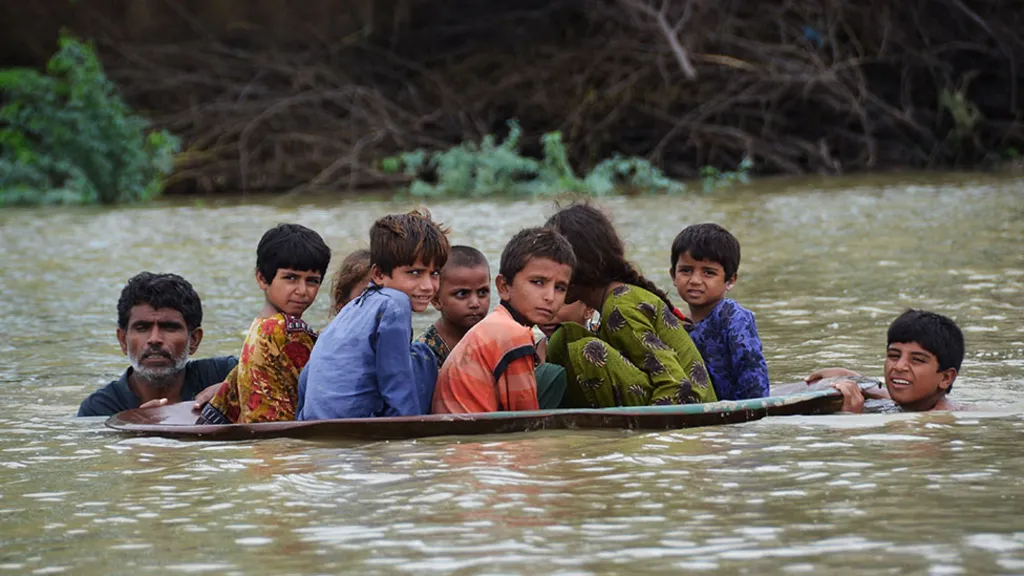Climate change-fueled monsoon floods in Pakistan have killed over 300 people, displaced thousands, and damaged homes. Scientists warn that such extreme weather events are arriving decades earlier than expected, demanding urgent action.
By Imran Malik | August 7, 2025 | MediaBites
Pakistan is once again facing the brutal consequences of climate change as deadly flash floods have swept across the country, killing more than 300 people and displacing thousands. From June 26 to August 5, relentless monsoon rains, intensified by human-induced climate change, have caused widespread destruction in urban centers and remote villages alike, turning lives upside down and revealing a grim future if action isn’t taken.
How Climate Change Worsened the Floods
A newly released World Weather Attribution (WWA) study confirms that rainfall across South Asia was 10-15% more intense between June 24 and July 23 due to global warming. Scientists concluded that the warmer atmosphere, a result of fossil fuel emissions, holds more moisture, a key factor in the torrential monsoon downpours that led to building collapses, livestock losses, and shattered communities.
Climatologist Jakob Steiner from Islamabad says, “Events predicted for 2050 are already happening in 2025. High temperatures and erratic rainfall are now the new normal.”
Worst-Affected Areas
The northern regions of Pakistan have borne the brunt of the floods. In Sarwarabad, entrepreneur Saqib Hassan lost not only his home but also 18 homes of family members and entire dairy farms, with losses exceeding PKR 100 million ($360,000). Tragically, many received no timely evacuation alerts except mosque loudspeakers. The state’s response? A handful of food packages worth PKR 50,000 and seven tents.
“Now we are homeless. Our homes are destroyed,” said Saqib, still sheltering under makeshift tents two weeks later.
Future Outlook: A Country at Risk
Pakistan contributes less than 1% of global carbon emissions, yet suffers some of the worst climate-related damage. The 2022 floods were a painful memory, with 1,700 deaths and $40 billion in damages. Now in 2025, a similar pattern is unfolding — more intense, more frequent, and more devastating.
Experts like Maya Walberg from the Red Cross Red Crescent Climate Centre stress the need for long-term planning:
“Half of Pakistan’s urban population lives in flood-prone informal housing. We must build flood-resistant homes and stop constructing in high-risk zones.”
International Help Falling Short
Despite repeated UN warnings, climate adaptation funds remain insufficient. Rich nations — the largest polluters — still contribute far below required levels for vulnerable nations like Pakistan. The Loss and Damage Fund, meant to compensate for climate-related destruction, covers only a fraction of actual annual needs.
“Every tenth of a degree in warming means deadlier monsoons,” warns Mariam Zaharia of Imperial College London, urging a rapid transition to renewable energy.
Pakistan’s 2025 floods are not just another natural disaster — they are a climate alarm bell, loud and unignorable. From government inaction to poor infrastructure and lack of global support, the cracks in the system are visible — and deepening.
If the world doesn’t act fast, Pakistan’s future floods may claim more than homes — they may drown an entire generation’s hopes.



1 Comment
There are some attention-grabbing deadlines in this article but I don’t know if I see all of them heart to heart. There may be some validity however I will take hold opinion till I look into it further. Good article , thanks and we want more! Added to FeedBurner as properly